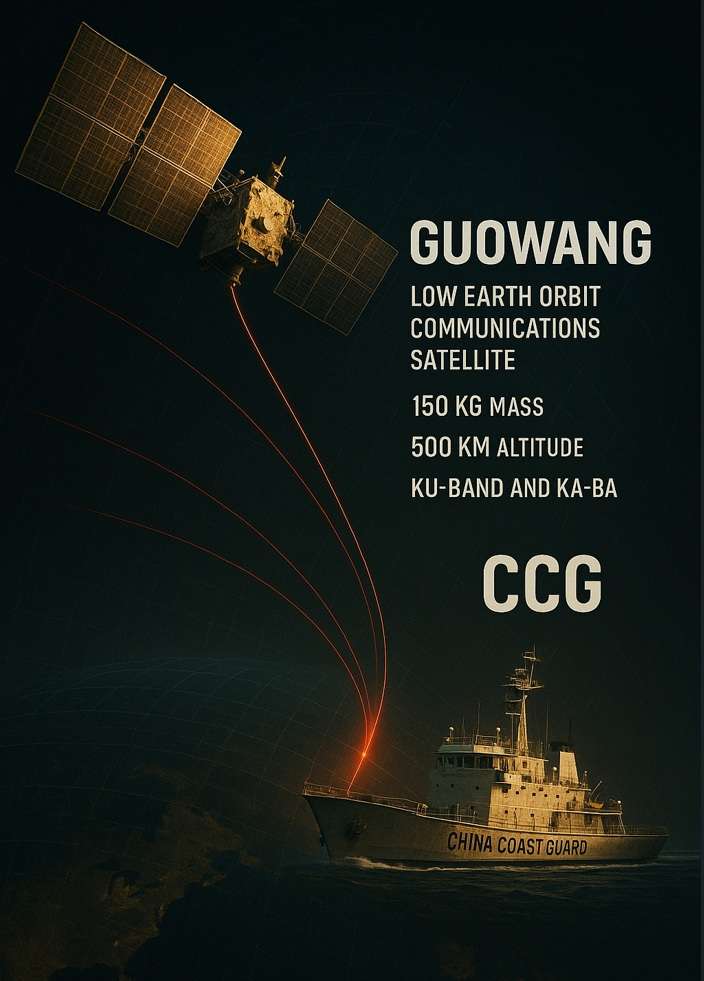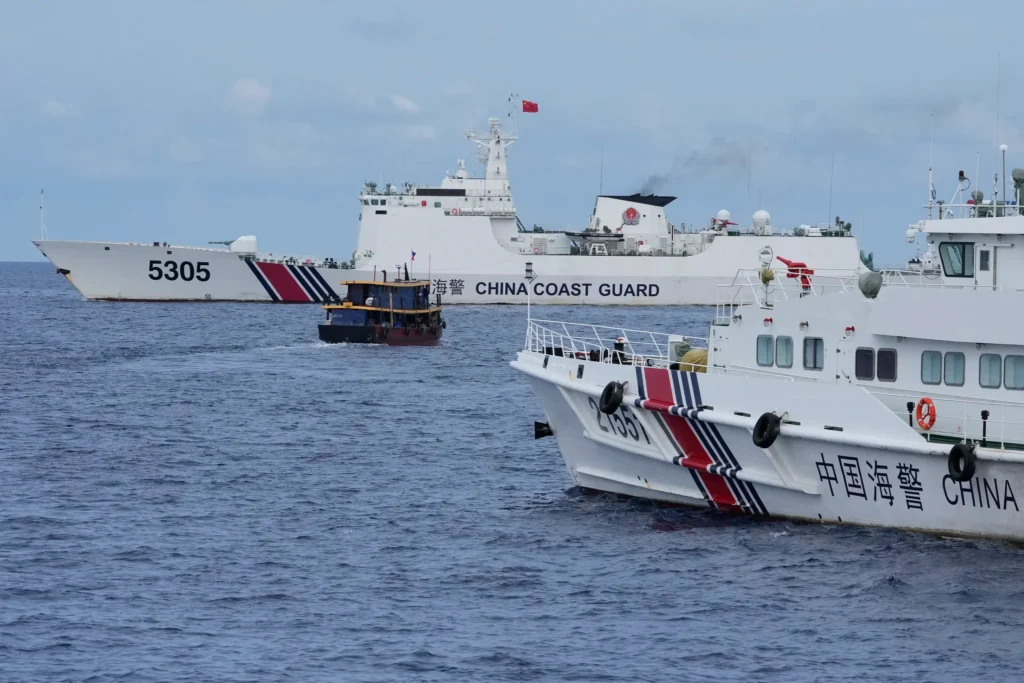This is not science fiction. This is not a future scenario. This is happening now, in orbit, while the world looks elsewhere.
China’s latest satellite launch represents a dangerous escalation in its military capabilities aimed directly at Taiwan and US forces in the Western Pacific, according to intelligence sources. 
On April 28, Beijing launched its third batch of Guowang low-Earth orbit communications satellites from Wenchang spaceport, marking China’s 23rd orbital launch of 2025. While officially described as a civilian telecommunications network with “various payloads” for applications like navigation and remote sensing, intelligence provided to Taiwan tells a far more concerning story.
Reports indicate Chinese Coast Guard vessels have been actively testing the Guowang megaconstellation’s ability to designate targets for DF-26 ballistic missiles, specifically to support future strikes against US forces in the region. This dual-use technology masks military applications behind civilian purposes, a hallmark of China’s strategic ambiguity.
How it Works :
The Guowang constellation’s three-tiered architecture represents a formidable military asset. Its part of China SatNet (Xingwang, Guo Wang, GuoWong, Guangwang, National Grid, China Satellite Network. Its core layer maintains command links with ground control, the intermediate layer enables secure battlefield communications between orbital assets, and the user layer delivers tactical intelligence to forward-deployed forces. This strategic design ensures mission resilience against enemy countermeasures, enabling dynamic reconfiguration during kinetic anti-satellite operations. Equipped with advanced surveillance payloads including synthetic aperture radar and optical reconnaissance systems, Guowang provides commanders with real-time targeting data, secure communications channels immune to conventional jamming, and precision navigation capabilities that function independently of GPS networks. The system’s comprehensive coverage enables global force projection while maintaining persistent battle space awareness and information dominance across maritime, aerial, and terrestrial domains. Over the past few weeks, Chinese military activities around Taiwan have intensified dramatically. The PLA conducted large-scale naval exercises just 70 miles off Taiwan’s eastern coast, deploying their newest Type 055 destroyers in what analysts call a “dress rehearsal” for a potential blockade. Chinese military aircraft violated Taiwan’s air defence identification zone a staggering 47 times, with nuclear-capable H-6 bombers flying increasingly provocative patterns.
Over the past few weeks, Chinese military activities around Taiwan have intensified dramatically. The PLA conducted large-scale naval exercises just 70 miles off Taiwan’s eastern coast, deploying their newest Type 055 destroyers in what analysts call a “dress rehearsal” for a potential blockade. Chinese military aircraft violated Taiwan’s air defence identification zone a staggering 47 times, with nuclear-capable H-6 bombers flying increasingly provocative patterns.
Beijing’s Coast Guard, operating as a paramilitary force, has harassed Taiwanese fishing vessels in disputed waters, forcing several to return to port after dangerous confrontations. These actions demonstrate China’s strategy of gray-zone warfare—hostile acts below the threshold of conventional military conflict that gradually wear down Taiwan’s resolve.
The Guowang constellation represents a critical advancement in China’s anti-access/area denial capabilities, potentially neutralising the traditional advantages of US carrier groups. With a proposed 13,000 satellites at full deployment, this network would dwarf SpaceX’s Starlink system and provide Beijing with unprecedented surveillance and targeting abilities throughout the Indo-Pacific.
The implications extend far beyond regional tensions. With each satellite launch, China’s Coast Guard gains another digital eye, another secure communications channel, another targeting system that functions regardless of jamming attempts. The three-tiered architecture ensures that even if diplomatic channels demand de-escalation, the technical capability for immediate escalation remains perpetually in orbit.
Perhaps most concerning is the precedent this sets. The Guowang system represents the first comprehensive militarisation of a nominally civilian maritime force through space-based assets but it certainly won’t be the last. As other nations race to develop countermeasures, the waters once governed by international law increasingly become governed by those who control the skies above them.

